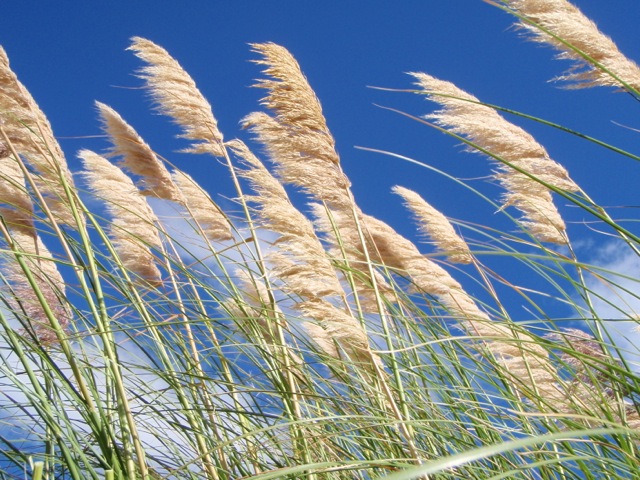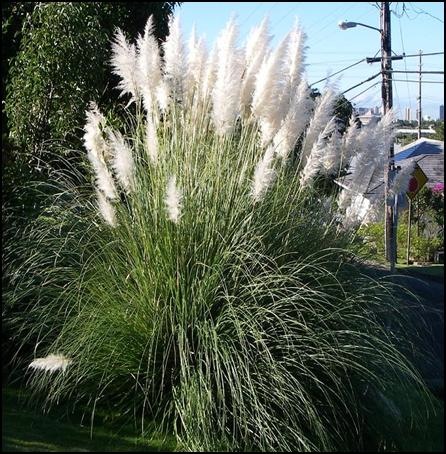Do NOT pull or cut down the plant. OISC will properly remove and dispose of the plant to prevent spreading seeds and re-sprouting. Please report pampas grass to OISC. Send photo and location to oisc@hawaii.edu or text 808-286-4616. You can also call our office at 266-7994.
Pampas Grass (Cortaderia jubata, Cortaderia selloana)
Family: Poaceae
Pampas grass is native to South America and while it’s a popular ornamental grass, it is considered very invasive. Pampas grass is on the Hawaii State Noxious Weed List , making it illegal to sell or transport pampas grass in the state of Hawai’i. The Division of Forestry and Wildlife of the Hawai‘i Department of Land and Natural Resources has designated this species as one of Hawaii’s Most Invasive Horticultural Plants.
Description:
- Large clumping grass that may reach 2 meters (6 ft) or taller
- Leaves are narrow and have sharp, serrated edges
- Showy white to purple flower plumes are sometimes used in floral arrangements
- Native to South America, introduced to Hawaii as ornamentals
Harm:
- Seeds are spread long distances by wind. In native forests they out-compete native plants and create a fire hazard.
- Cortaderia jubata plants are able to produce viable seeds without cross-pollination
- C. selloana, requires cross-pollination between male and female plants to produce viable seeds, spread primarily by wind. The invasive nature of C. selloana was not recognized in Hawaii in past years because only female plants were cultivated and sold, however male plants are now available.
- Serious pests in California and New Zealand.
On O’ahu:
- OISC is working to educate property owners where the few ornamental plantings of C. selloana exist, and requests that pampas grass be removed and replaced with non-invasive alternate plants. Alternative plants can be found using PLANT PONO.
- You can report pampas grass to OISC by calling 286-4616 or email oisc@hawaii.edu.



